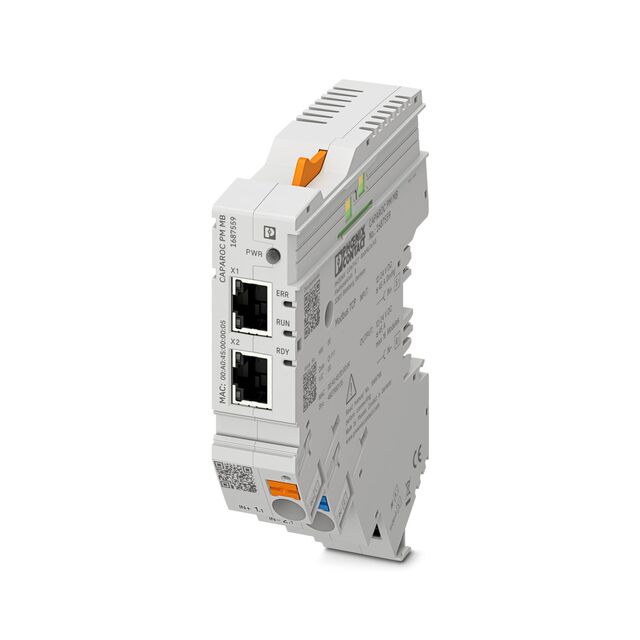DSP/BIOS Sizing Guidelines for TMS320C2000/C5000/C6000 DSPs (Rev. A)
Texas InstrumentsThe DSP/BIOS real-time kernel is a scalable library that allows application developers to control how much of the real-time operating system is actually placed in target memory and to optimize the tradeoff between memory usage and functionality.
This application report contains information on the size impact of using DSP/BIOS modules in your application as well as a number of hints and guidel
AN-1084 Parallel Application of High Speed Link
Texas InstrumentsApplication Note 1084 Parallel Application of High Speed Link
Using the Flash Bootload Capability of the TMS320VC5402 DSK
Texas InstrumentsDeveloping a routine for the TMS320VC5402 board is relatively straightforward. Creating a bootable routine and generating the Hex file to burn it into the Flash are also straightforward tasks. This short document walks a developer through the procedure in relatively simple terms.
Hardware UART for the TMS320C3x
Texas InstrumentsThe TMS320C3X does not offer a UART for asynchronous communication. On the TI Digital Signal Processor BBS there is a software UART emulator available. This will allow the TMS320C3x to perform asynchronous communication. There are some instances that a hardware UART may be necessary for a particular application. This document describes one possible solution for implementing a hardware UART. This d
Compensate Transimpedance Amplifiers Intuitively (Rev. A)
Texas InstrumentsTransimpedance amplifiers are used to convert low-level photodiode currents to usable voltage signals. All too often the amplifiers have to be empirically compensated to operate properly. The problem can be easily understood if one looks at all the elements involved.
TMS320C6748/46/42 Power Consumption Summary
Texas InstrumentsThis article discusses the power consumption of the Texas Instruments C6748/46/42. Power consumption on the C6748/46/42 devices are highly application-dependent. The low-core voltage and other power d
TVP5160 Patch Code Download Guidelines (Rev. A)
Texas InstrumentsTVP5160 Patch Code Download Guidelines
Methods to Improve Low Dropout Operation with the TPS54240 and TPS54260 (Rev. A)
Texas InstrumentsTPS54040A, TPS54060A, TPS54140A, TPS54160A, TPS54240, TPS5260 Methods to Improve Low Dropout Operation with the TPS54240 and TPS54260 TPS540xx SLVA547 PMP/DC_Solutions/SWIFT/2-App_Reports
LMH0030 (CLC030), LMH0031 (CLC031A) ?Co Frequently Asked Questions (FAQs)
Texas InstrumentsLMH0030 (CLC030), LMH0031 (CLC031A) ?Co Frequently Asked Questions (FAQs)
Analysis and Measurement of Resonant Tank Current on LLC
Texas InstrumentsAnalysis and Measurement of Resonant Tank Current on LLC Written by Chinese engineer
AN-835 Futurebus+ BTL Grounding Scheme
Texas InstrumentsApplication Note 835 Futurebus+ BTL Grounding Scheme
Designing With TI Ultra-Low-Voltage CMOS (AUC) Octals and Widebus Devices
Texas InstrumentsSystem designers are continuously seeking ways to improve signal integrity increase speed and reduce power consumption in personal computers telecommunication equipment and other electronic systems. The Texas Instruments (TI) next-generation Advanced Ultra-low-voltage CMOS (AUC) octals and Widebus(TM) devices are designed to achieve these goals. These devices are designed for a 0.8-V to 2.7-V
AN-2020 Thermal Design By Insight, Not Hindsight (Rev. C)
Texas InstrumentsThis application report provides an in-depth discussion of thermal design.
AN096 Using CC1190 Front End with CC1101 under FCC 15.247 (Rev. A)
Texas InstrumentsCC1101-CC1190 AN096 Using CC1190 Front End with CC1101 under FCC 15.247
Open Loop Phase-Noise Performance of CDC7005 at Various Frequencies
Texas InstrumentsThis application brief presents phase-noise data taken on Texas Instruments CDC7005 jitter cleaner and synchronizer PLL. The phase noise performance of CDC7005 depends on thephase noise of the reference clock the voltage-controlled crystal oscillator (VCXO) clockand the CDC7005 itself. This applications brief shows the phase noise performance of the CDC7005 clock synthesizer at the most popula
Timing of TC237 Frame Transfer CCD Image Sensors
Texas InstrumentsTI frame transfer charge coupled devices (CCD) image sensors can be used in a wide variety of applications with the following topology options: one to three serial registers transfer gates a multiplexer separate reset lines center clearing drains and electron-hole recombination or lateral-overflow-drain antiblooming protection. This document describes the timing design for the TI frame transf
AM17x Power Consumption Summary
Texas InstrumentsThis article has been contributed to the TI Developer Wiki. To see the most recently updated version or to contribute visit this topic at:
http://processors.wiki.ti.com/index.php/AM17x_Power_Consumption_Summary. This article discusses the power consumption of the Texas Instruments AM17x. Power consumption





